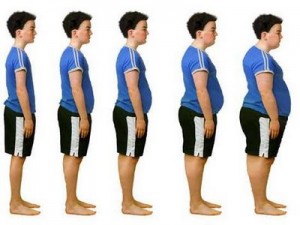I tuned in to Jamie Oliver’s Food Revolution the other night. I’m not a lover of reality shows, but, in this case, my curiosity got the best of me. For those of you who haven’t watched TV in the past few months, Food Revolution is a show that documents the antics of celebrity chef, Jamie Oliver, as he rides into the “fattest city in the US” and turns the population (especially the school kids) into healthy eaters. All this in slick, sensationalistic, sixty-minute segments!
As we all know, childhood obesity is taking a terrible toll on our kids. There’s no doubt that a crisis of this magnitude requires us to enact policy changes and programs aimed at addressing the problem. But do programs like Oliver’s Food Revolution really work? How do educators, concerned citizens, and policy makers know which programs will give us the best return on our investment?
John Cawley, a professor in the College of Human Ecology’s Policy Analysis and Management department, has recently published a study that addresses this question. Cawley, an economist, examined recent studies of several programs to reduce obesity, and found that CATCH (Coordinated Approach to Child Health), a multistate program that teaches elementary schoolchildren how to eat well and exercise regularly, is the most cost-effective. On the other hand, the study found that many other popular programs are not as effective and were much more costly than CATCH. Cawley’s study can be found here.
Cawley, who has served on the Institute of Medicine’s committee to prevent childhood obesity, says “It’s a bit of a Wild West, anything-goes environment when it comes to creating anti-obesity programs and policies. With limited resources, it would be counterproductive to rush into programs that are not cost-effective and won’t provide the greatest return on investment.
So, what does any of this have to do with Oliver’s Food Revolution? It suggests that policy makers need to look beyond the glitz when they consider which programs to invest in. It’s important to investigate which programs are “evidence-based” and which are merely entertainment. Food Revolution has not been rigorously evaluated. A preliminary study conducted by the West Virginia University Health Research Center to investigate the program suggests that the program had few positive impacts and a negative impact on meal participation and milk consumption.
In the end, as with most persistent societal challenges, the obesity epidemic is a complex problem best addressed by concerned citizens and policy makers who are committed to finding the best evidence-based solutions. And, unfortunately, it’ll probably take us longer than the sixty-minute segments of a reality TV show to fix the problem.




Thank you very much. I like your honesty, too.
In the first article you linked, there is this pretty big caveat: “Interpreting the prevalence of high BMI requires some caveats. Body mass index does not measure adiposity directly. In children, BMI is correlated with adiposity and that correlation is higher at higher levels of BMI for age than at lower levels of BMI for age. Moreover, there are differences in adiposity between black and white individuals at the same BMI level.22 Because BMI varies by age and sex in children, cut points relate to a reference population, in this case the CDC growth charts. These cut points are statistical and are not based on health outcomes.23”
Given that fewer than a fifth of children are labeled “obese” by BMI, that BMI itself is a faulty measure of fatness, that fatness is correlated with certain potential health problems, but not a direct measure of them (many fat adults do not have heart disease, diabetes, etc., while some skinny or “normal weight” adults do), I don’t think childhood obesity is as big of a problem as many other people think it is.
I also worry about the focus on obesity, for two main reasons.
First, as you discussed in your original post, there is a lot of focus on losing weight without good programs that show how to do so effectively and healthily. Dieting does not work for most people, who regain the weight, usually plus some, within a few years. (By “most people,” I mean 90% or more.) http://www.scientificamerican.com/podcast/episode.cfm?id=BE73BA72-E7F2-99DF-325F60B2E1AB3C7F
Second, eating lots of fruits and vegetables and exercising regularly are things that are healthy for everyone, helping to prevent many diseases. Focusing on obesity may help some people avoid becoming obese, but is unlikely to help those who are already obese (children or adults–I clicked around on that CATCH site, and found a few different statements about how important it was to prevent obesity, since once you’ve gained weight the odds are you aren’t going to lose significant amounts and keep it off). And it may have (and I’ve seen it have anecdotally) three bad side effects: 1) contributing to the stress (and ostracization) that many obese people experience, 2) making obese people less likely to eat fruits and vegetables and exercise, since they don’t think they are getting health benefits since they aren’t losing much weight and keeping it off, and 3) making skinny people who eat poorly and don’t exercise think they can continue those habits, since they aren’t gaining weight.
I’ve been influenced in my thinking on this by a few books, including Gina Kolata’s Rethinking Thin and Eric Oliver’s Fat Politics and Susan Bordo’s Losing It. Also, I started reading books on obesity because one of my sister’s gained a lot of weight rapidly and also started having many other weird things going on with her body–tingling arms, really bad headaches and backaches, painfully dry skin, etc. She went to the doctor several times over a few years, and he kept telling her that all these problems would go away if she would just lose weight. She tried–Weight Watchers, Jenny Craig, on her own. She joined a “boot camp” exercise program at the gym. And she only lost a few pounds.
Then she went to a gynecologist, because her menstrual cycle was all out of whack. The gynecologist knew immediately that my sister had Cushing’s Disease–she had all the classic symptoms, including the mood face and the buffalo hump. One of the other symptom’s of Cushing’s Disease is rapid weight gain.
Thanks for listening. I didn’t intend for this to get so long.
You said, “As we all know, childhood obesity is taking a terrible toll on our kids.”
Actually, I don’t know that. Can you provide some evidence of that, please? And can it refer to a large number of children (preferably a majority of children in the U.S., or even a majority of obese children, since you say, without qualifier, “our kids”), not just the 2% or so that have Type 2 diabetes?
Thank you.
(I agree with you completely about the need for evidence-based living, and for not backing programs with no evidence that they work.)
Thanks for posting your response. These are excellent points and it’s a good reminder for me about using broad terms (like “our children”) to talk about childhood obesity and other health-related issues. Here are some good evidence-based resources about childhood obesity and related health risks.
An excerpt from a recently published JAMA article:
“High body mass index (BMI) among children and adolescents continues to be a public health concern in the United States. Children with high BMI often become obese adults,1 and obese adults are at risk for many chronic conditions such as diabetes, cardiovascular disease, and certain cancers.2 High BMI in children may also have immediate consequences, such as elevated lipid concentrations and blood pressure.3 Since 1980, the prevalence of BMI for age at or above the 95th percentile (sometimes termed “obese”) has tripled among school-age children and adolescents, and it remains high at approximately 17%.4-6″
Read the full article at this link: http://jama.ama-assn.org/cgi/content/full/303/3/242?ijkey=ImvVL7s53Zyps&keytype=ref&siteid=amajnls
Other evidence-based resources can be found on the CDC website:
http://www.cdc.gov/obesity/
http://www.cdc.gov/nccdphp/publications/AAG/pdf/obesity.pdf
And, finally, I was using the term “our children” to refer to children in the US. My use of the term probably has something to do with the fact that I’m an extremely nurturing person, and I actually do have motherly feelings toward all children. I wasn’t being scientific, I was just being myself.